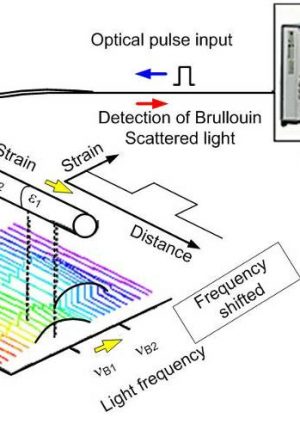New Developments in Optical Fibre Diameter Analyser Measurement Tools
New Developments in Optical Fibre Diameter Analyser Measurement Tools
Blog Article
Maximize Your Fibre Optic Performance: Understanding Optical Fiber Diameter Analyser Technology
The efficiency of fiber optic systems is critically affected by the precision of their size, a factor often neglected in the pursuit of optimal signal honesty. Understanding the innovation behind optical fibre diameter analysers exposes the complex balance between dimension accuracy and production top quality. These devices not just enhance conformity with market standards yet additionally offer real-time insights that can preemptively deal with potential issues. The effects of their use expand beyond simple dimension; they can essentially modify the landscape of fibre optic efficiency. What elements should one think about to harness their full potential?
Significance of Optical Fibre Size
The size of optical fibre plays a critical function in figuring out the efficiency and efficiency of communication systems. It affects a number of vital criteria, including the setting of light breeding, attenuation, and data transfer capacity. Larger sizes generally enable several light modes, facilitating higher information transmission prices. On the other hand, smaller diameters tend to support fewer settings, which can enhance signal clarity and reduce crosstalk.

Furthermore, recognizing the size's implications can result in set you back financial savings by reducing the need for signal boosting and repeaters in considerable networks (optical fibre diameter analyser). To conclude, the significance of optical fiber size can not be overstated, as it straight affects the total performance and dependability of modern-day communication systems

Just How Diameter Influences Signal Quality
Signal top quality in optical fibre systems pivots dramatically on the size of the fibre. The size affects several vital specifications, including depletion, transmission capacity, and modal diffusion. A smaller sized size can cause greater attenuation rates, resulting in signal loss as light journeys via the fibre. This depletion can endanger the stability of the transmitted information, causing a decline in signal top quality, especially over lengthy ranges.
On the other hand, larger diameters usually enable for improved light capture and decreased modal diffusion, improving signal clearness. In multimode fibres, a bigger core size can support multiple light settings, yet it might also present intermodal dispersion, which can weaken signal quality. Selecting the optimum fiber size is critical for achieving the preferred performance in particular applications.
Moreover, the communication between the fiber diameter and the wavelength of the light utilized plays a critical function in determining the reliable transmission range and general signal stability. Because of this, comprehending just how fibre diameter affects signal high quality is necessary for network designers and designers striving to enhance optical fiber systems for dependable, high-speed data transmission.
Summary of Size Analyser Modern Technology
In several optical fiber manufacturing processes, exact measurement of fibre diameter is necessary for making certain constant efficiency and quality (optical fibre diameter analyser). Size analysers are innovative instruments developed to evaluate visit here the physical dimensions of optical fibers with high precision. They employ sophisticated optical and laser technologies to gauge the diameter, ovality, and concentricity of the fiber, thus offering critical information for quality assurance
These analysers can operate in-line throughout the production procedure or as part of off-line testing procedures. In-line systems allow real-time monitoring, enabling makers to change parameters right away, therefore maintaining ideal manufacturing conditions. Off-line analysers, on the various other hand, offer thorough examinations of sets, ensuring that any type of deviations from defined resistances are identified and dealt with.
Size analysers dramatically add to the reduction of flaws in optical fibers, improving general item integrity. By constantly measuring key criteria, these technologies help with compliance with industry criteria and specifications. As the demand for high-performance optical fibers proceeds to rise, the function of diameter analysers becomes progressively crucial in achieving the preferred high quality and performance criteria in fiber optic systems.
Secret Functions of Fibre Diameter Analysers
Although various versions of fibre diameter analysers exist, they commonly share a number of crucial features that boost their functionality and integrity. One of one of the most significant features is high-resolution dimension capacities, which make certain accurate size analyses, vital for keeping top quality control in fiber manufacturing. Additionally, many analysers integrate innovative optical sensing units created to identify minute variants in fibre diameter, thus offering vital data for process optimization.
Another essential feature is real-time surveillance, enabling operators to get instant feedback on fibre size throughout the production process (optical fibre diameter analyser). This capability assists in quick changes and decreases the probability of problems. Numerous analysers additionally come geared up with easy to use user interfaces, enabling operators to easily browse through setups and information outcomes
Additionally, robust information storage space and evaluation capabilities are essential find out here for tracking historic performance patterns and guaranteeing conformity with industry requirements. Some models also supply connection alternatives for assimilation right into existing production control systems, enhancing overall operational efficiency. Portable and compact styles allow for versatile implementation within manufacturing settings, guaranteeing that top quality assurance procedures are smooth and effective. These features collectively add to the efficacy of fiber diameter analysers in maximizing fiber optic efficiency.
Ideal Practices for Fiber Optimization

First, routine calibration of optical fiber diameter analysers is vital. This makes certain accurate dimensions and minimizes prospective Homepage disparities that might affect efficiency. Next off, maintaining a clean working atmosphere is essential; dust and impurities can cause signal deterioration.
In addition, it is necessary to select fibers that meet particular application demands. This entails reviewing factors such as depletion, transmission capacity, and environmental conditions. Appropriate setup methods ought to also be followed, including staying clear of sharp bends and too much stress, which can endanger fiber honesty.
Moreover, utilizing innovative monitoring systems can help with real-time performance assessments, enabling timely identification of concerns. Regular screening and upkeep need to be conducted to make certain that fibres stay within optimum operational criteria.
Lastly, training personnel on the most recent fibre optimization technologies and techniques will certainly improve their capacity to execute effective strategies. By adhering to these finest techniques, companies can substantially enhance the performance and life-span of their optical fibre systems, ensuring reliable interaction and data transfer.
Verdict
In verdict, the integration of optical fibre size analyser innovation is critical for making best use of fiber optic performance. By making certain precise dimensions of fibre measurements, these analysers substantially enhance signal top quality and decrease losses throughout information transmission.
Signal quality in optical fiber systems hinges significantly on the diameter of the fibre.In many optical fibre production processes, precise dimension of fiber size is essential for making certain consistent efficiency and top quality. As the demand for high-performance optical fibres proceeds to rise, the function of size analysers ends up being increasingly important in attaining the desired quality and efficiency standards in fibre optic systems.
These functions collectively contribute to the effectiveness of fibre diameter analysers in enhancing fibre optic performance.
In verdict, the assimilation of optical fiber diameter analyser modern technology is important for making the most of fiber optic performance.
Report this page